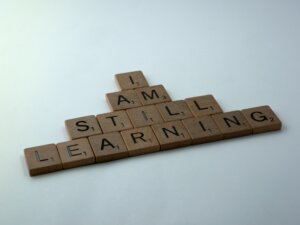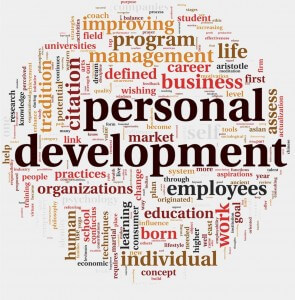It seems traditional classroom training as we know it may be dying, but there are ways to bring it back to life.
“Recent remarks* by Tony Bingham, CEO of ASTD, suggested that much of the formal classroom with instructor-led training has gone the way of scheduled classes, blackboards and overhead projectors. Replaced by the ‘pull’ of social media from the digital natives who will become more than 50% of the USA workforce by 2015.”

The term “Digital natives” makes perfect sense in this world so deeply entrenched in social media.
“Digital natives, Millennial Generation (born 1980) and Generation “i” (born 2000), have grown up digital. Their life experiences have been digital instead of analog which created values different than more seasoned generations.
These ‘Net Generations’ will expect, require and demand a more digital learning experience.”
And, of course, this brings up the usual questions. From the article:
How do we make the career transition to a more digital-based, social media-inspired learning profession?
How will employers recycle the classroom trainer?
*Tony spoke at the Southwest Learning Summit & Exposition hosted by the Dallas Chapter of ASTD. He showed several videos to accent his talk. You can see two of those videos at the links below.
A Vision of K-12 Students Today
According to the producers of this video:
“This project was created to inspire teachers to use technology in engaging ways to help students develop higher level thinking skills. Equally important, it serves to motivate district level leaders to provide teachers with the tools and training to do so.”
Don Tapscott “Growing up Digital”

Most of us are neither Generation (to be Generation “i” we’d be under age 11), but I think we have to be aware of the changing learning environment. However, one thing that never changes are how we use our senses to learn. If 99% of how we teach or train is verbal and 87% of how we learn is visual, it makes sense that speaking without engaging students or trainees visually is not going to hold their attention.
Now, I have never said just stand and talk in the classroom. Most good trainers and teachers I know use visual as well as auditory and kinetic learning. If we aren’t incorporating the latest in “digital” offerings we need to start.

Teachers in schools may be too strapped financially to make use of those Web 2.0 resources. They are also forced to teach the content testing requirements of the state, which, when in doubt they will be able to accomplish that in time, forces them to cut back on creative teaching methods and rely on what they know best: telling. Is that the best for the school? Probably not. Wealthier school districts are able to provide tablets or laptops for students and use the media, and are doing it today; those schools rank high in learning scores. Thankfully most teachers are younger and grew up with the technology themselves.
How does this affect training classrooms? I think it means we keep doing what we are doing if we are engaged in classroom training. Here’s how we face the challenge–what we can and can’t do…
- Don’t forget to be part of the visual yourself, gesturing, using facial expressions and moving, which are also visual.
- Be conscious of the digital possibilities.
- Use the latest technology if you can. It will be even harder to incorporate a “WOW” factor without the latest digital offerings.
- Educate yourself on the digital media that may be available. Some of it is readily available through YouTube.
For teachers, that challenge is no different, but it appears they are aware, which is good news. Here’s a comment from a teacher on the first video:
“So then the challenge becomes, how can I use or integrate Facebook, Twitter and other Web 2.0 technology out there into the curriculum so that I can engage students with it and use it as a vehicle to teach? Part of our jobs as educators is to teach students SELF-discipline. We cannot do that by taking away technology. We must teach allow them the technology and teach them to be disciplined and self-directed in their responsible use of it.”
I know there are specialists out there already engaged in promoting the Web 2.0 technology. Keep in mind that there are many tools to communicate and some better than others, but each serve a purpose. Some techniques and tools work well individually, while some work better when added to program using a variety of learning methods. I like to cover my bases and use a little of everything in my training. I use the basic verbal, visual and kinetic techniques.

Nothing beats experiential learning, instilling motivation (the why), getting a student or trainee committed to learning–realizing “what I am learning I can apply to my job and my future career.” The digital factor only makes that even more hands-on for our “Digital natives”–our Generation Millennium and Generation “i” trainees-to-be, and students.
—
For more resources about training, see the Training library.
My comments and views are my own. I thank the Free Management Library for the opportunity to express them in this forum. I hope that you get something out of them. Haven’t had enough? Check out some of my other training articles that try to make common sense out of what we do. This is an exciting field. It is a time to exercise creativity in how we do our jobs. I’m always open to new ideas and related content. Comment here or e-mail me. I have a website, too, where I have more to say on topics other than training and development such as communication, theatre and I even write theatrical reviews. You can also find me on Twitter and Facebook (under actingsmarts), LinkedIn and GovLoop under Jack Shaw.
Looking forward to your feedback, I’m as interested in making this work better for you. There are sites out there that will give you only definitions and the basics; I try to do more. If you want it more basic, just let me know and I’ll do my best to accommodate. Forgive me if I slip in a little opinion, which, by the way, is my opinion and mine alone and not the opinion necessarily of other folks associated with The Free Management Library. For a look at the human side of training from my Cave Man perspective, please check out my book, The Cave Man Guide to Training and Development. Happy training.
 Sections of this topic
Sections of this topic















